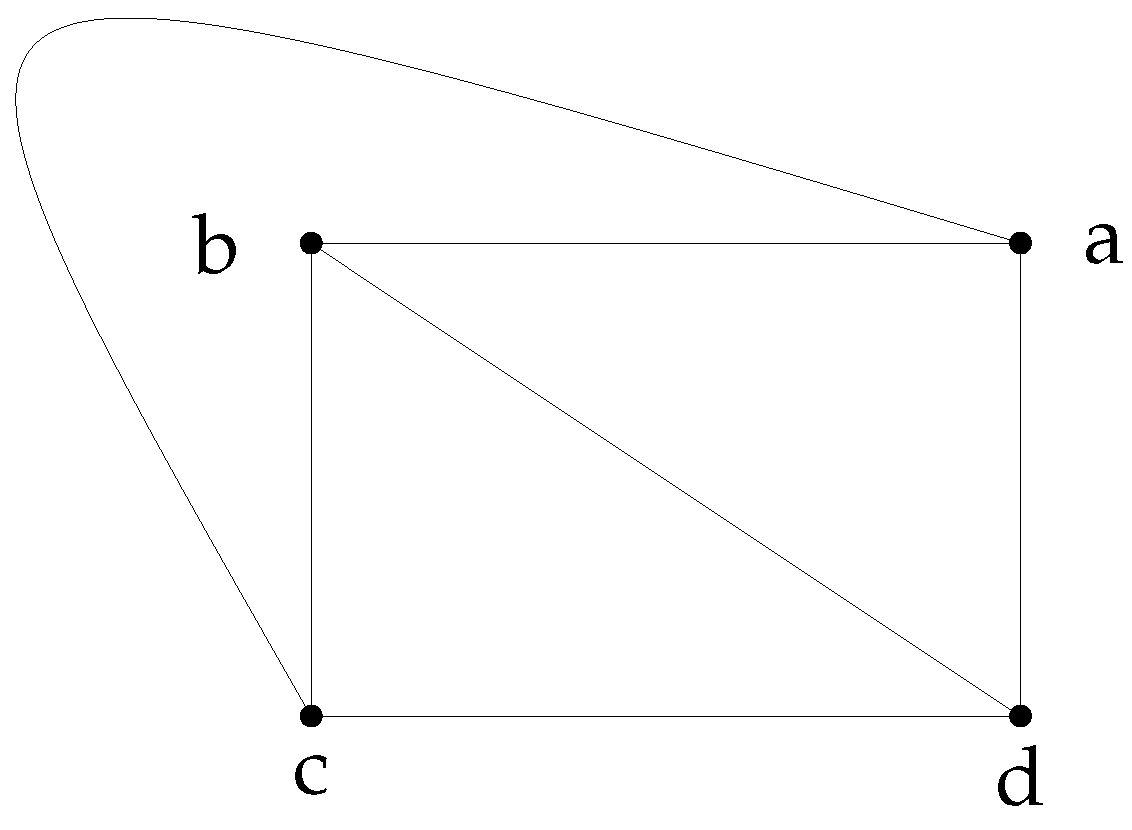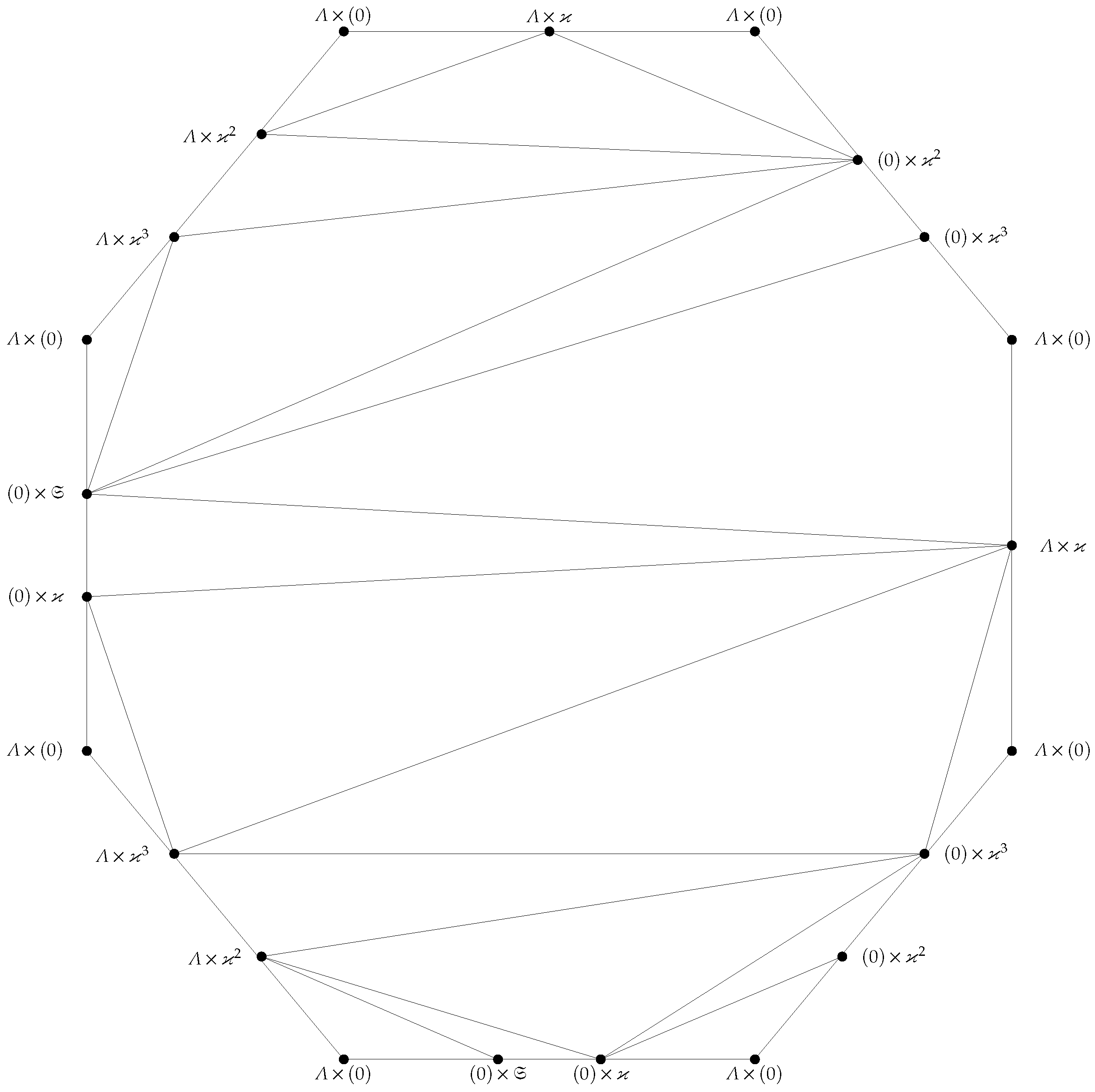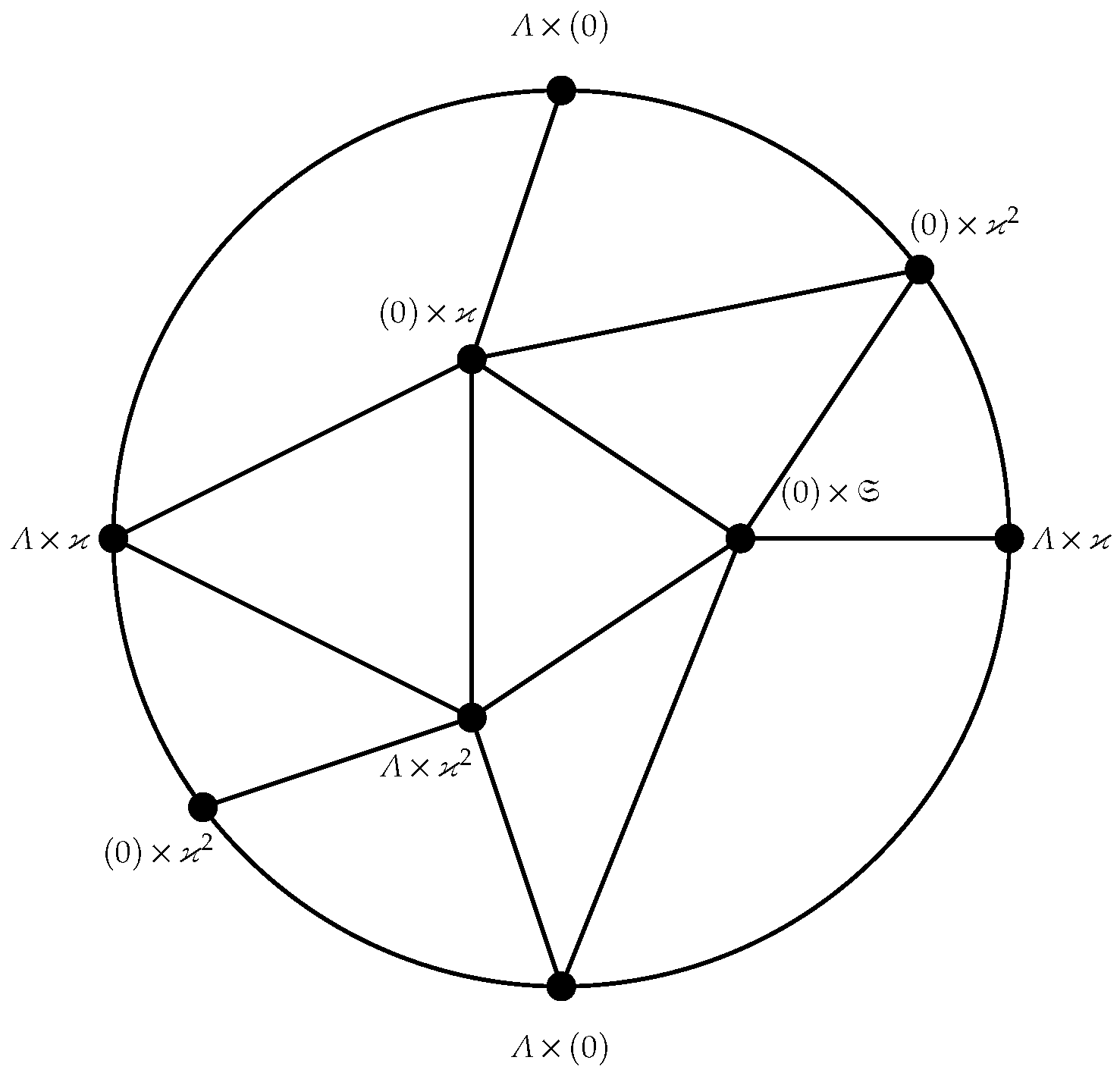Exploring Geometrical Properties of Annihilator Intersection Graph of Commutative Rings
Abstract
1. Introduction
2. Basic Properties of
- 1.
- If ∉, then .
- 2.
- If ∈, then ∈.
- 3.
- If ∉, then there exists a vertex such that forms a path in .
- 1.
- Λ is a local ring with maximum 4 non-trivial ideals.
- 2.
- , where and are fields.
- 3.
- , where Υ is a field, is a local ring, and ϰ is a unique non-trivial ideal of .
- ;
- satisfies the PCP without having a subdivision of as a subpart.
- 1.
- Λ is a local ring with a maximum of 3 non-trivial ideals.
- 2.
- , where and are fields.
- 1.
- Λ is a local ring with exactly 4 non-trivial ideals.
- 2.
- , where Υ is a field and is a local ring with ϰ as a unique non-trivial ideal of .
3. Genus of
- 1.
- Λ is a local ring between 5 and 7 non-trivial ideals.
- 2.
- , where , , and are fields.
- 3.
- , where each is a local ring having unique non-trivial ideal for and .
- 4.
- , where Υ is a field and is a local ring with ϰ and as its only non-trivial ideals.
- 1.
- Λ is a local ring with exactly 8 non-trivial ideals.
- 2.
- , where Υ is a field and is a local ring with ϰ, , and as its only non-trivial ideals.
4. Crosscap of
- 1.
- Λ is a local ring with 5 or 6 non-trivial ideals.
- 2.
- , where each is a field for .
- 3.
- , where Υ is a field and is a local ring with ϰ and as its only non-trivial ideals.
5. Domination Number of
- 1.
- For , the graph is a complete bipartite graph.
- 2.
- For , , where H denotes a multipartite graph and m is a positive integer with .
- 1.
- If , then .
- 2.
- If , then .
- 1.
- If , then , where at least one of or is a field.
- 2.
- If , then , where neither nor is a field.
6. Conclusions
Author Contributions
Funding
Data Availability Statement
Conflicts of Interest
References
- Beck, I. Coloring of commutative rings. J. Algebra 1988, 116, 208–226. [Google Scholar] [CrossRef]
- Anderson, D.; Naseer, M. Beck’s coloring of a commutative ring. J. Algebra 1993, 159, 500–514. [Google Scholar] [CrossRef]
- Anderson, D.F.; Livingston, P.S. The zero-divisor graph of a commutative ring. J. Algebra 1999, 217, 434–447. [Google Scholar] [CrossRef]
- Behboodi, M.; Rakeei, Z. The annihilating-ideal graph of commutative ring I. J. Algebra Appl. 2011, 10, 727–739. [Google Scholar] [CrossRef]
- Behboodi, M.; Rakeei, Z. The annihilating-ideal graph of commutative ring II. J. Algebra Appl. 2011, 10, 741–753. [Google Scholar] [CrossRef]
- Vafaei, M.; Tehranian, A.; Nikandish, R. On the annihilator intersection graph of a commutative ring. Italian J. Pure Appl. Math. 2017, 38, 531–541. [Google Scholar]
- Rehman, N.; Nazim, M.; Selvakumar, K. On the genus of annihilator intersection graph of commutative rings. Algebr. Struct. Their Appl. 2024, 11, 25–36. [Google Scholar]
- Kulli, V.R. On minimally nonouterplanar graphs. Proc. Indian Natl. Sci. Acad. 1975, 41, 275–280. [Google Scholar]
- Ansari, M.A.; Haidar, A.; Koam, A.N.A. On a graph associated to UP-algebras. Math. Comput. Appl. 2018, 23, 61. [Google Scholar] [CrossRef]
- Frank, K. Determining the smallest k such that G is K-outerplanar. Lect. Notes Comput. Sci. 2007, 4698, 359–370. [Google Scholar]
- Mohar, B.; Thomassen, C. Graphs on Surfaces; The Johns Hopkins University Press: Baltimore, MD, USA; London, UK, 1956. [Google Scholar]
- Rehman, N.; Nazim, M.; Selvakumar, K. On the planarity, genus and crosscap of new extension of zero-divisor graph of commutative rings. AKCE Int. J. Graphs Comb. 2022, 19, 61–68. [Google Scholar] [CrossRef]
- West, D.B. Introduction to Graph Theory, 2nd ed.; Prentice-Hall of India: New Delhi, India, 2002. [Google Scholar]
- Atiyah, M.F.; Macdonald, I.G. Introduction to Commutative Algebra; Addison-Wesley Publishing Company: Boston, MA, USA, 1969. [Google Scholar]
- Gitler, I.; Reyes, E.; Villarreal, R.H. Ring graphs and complete intersection toric ideals. Discrete Math. 2010, 310, 430–441. [Google Scholar] [CrossRef]
- White, A.T. Graphs, Groups and Surfaces; North-Holland: Amsterdam, The Netherlands, 1973. [Google Scholar]
- Wisbauer, R. Foundations of Module and Ring Theory; Breach Science Publishers: Philadelphia, PA, USA, 1991. [Google Scholar]



Disclaimer/Publisher’s Note: The statements, opinions and data contained in all publications are solely those of the individual author(s) and contributor(s) and not of MDPI and/or the editor(s). MDPI and/or the editor(s) disclaim responsibility for any injury to people or property resulting from any ideas, methods, instructions or products referred to in the content. |
© 2025 by the authors. Licensee MDPI, Basel, Switzerland. This article is an open access article distributed under the terms and conditions of the Creative Commons Attribution (CC BY) license (https://creativecommons.org/licenses/by/4.0/).
Share and Cite
Khabyah, A.A.; Ansari, M.A. Exploring Geometrical Properties of Annihilator Intersection Graph of Commutative Rings. Axioms 2025, 14, 336. https://doi.org/10.3390/axioms14050336
Khabyah AA, Ansari MA. Exploring Geometrical Properties of Annihilator Intersection Graph of Commutative Rings. Axioms. 2025; 14(5):336. https://doi.org/10.3390/axioms14050336
Chicago/Turabian StyleKhabyah, Ali Al, and Moin A. Ansari. 2025. "Exploring Geometrical Properties of Annihilator Intersection Graph of Commutative Rings" Axioms 14, no. 5: 336. https://doi.org/10.3390/axioms14050336
APA StyleKhabyah, A. A., & Ansari, M. A. (2025). Exploring Geometrical Properties of Annihilator Intersection Graph of Commutative Rings. Axioms, 14(5), 336. https://doi.org/10.3390/axioms14050336





